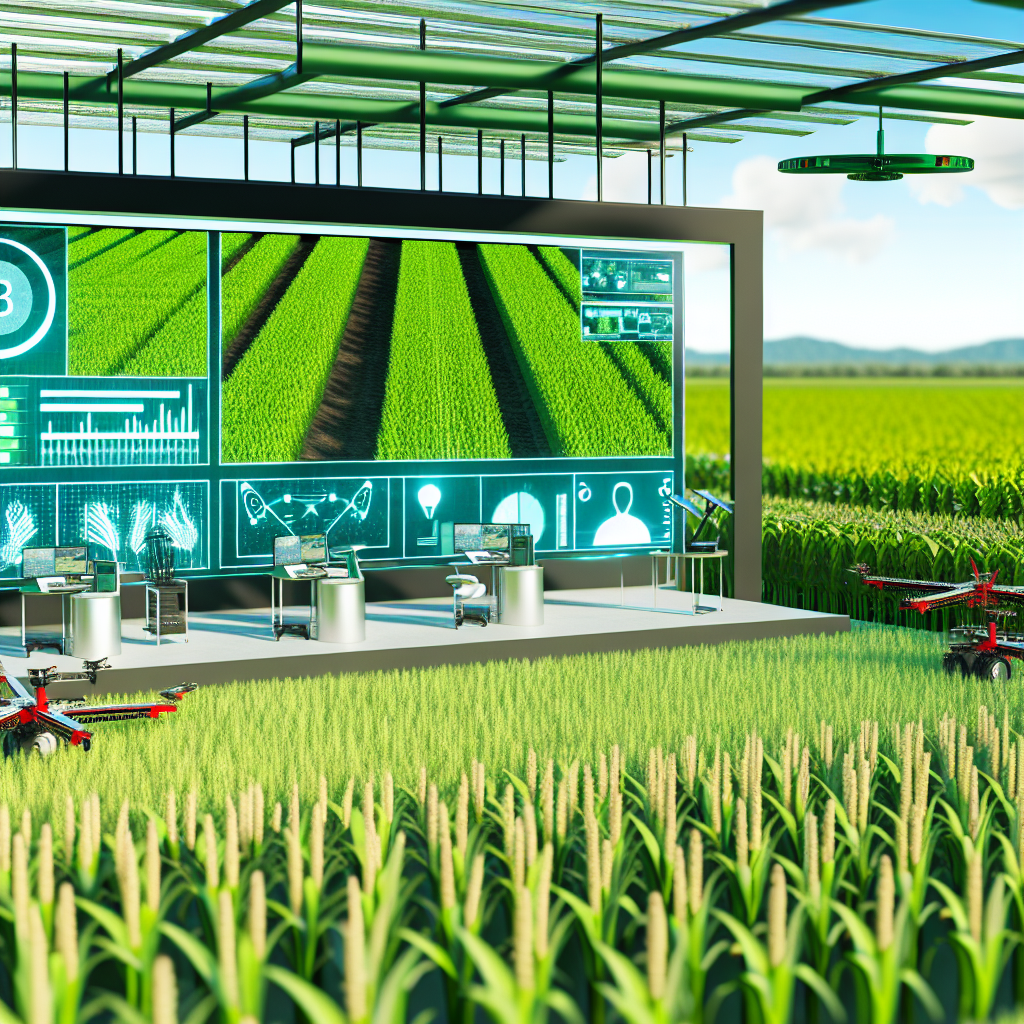-
- AI in Agricultural Yield Optimization
- Understanding AI in Agriculture
- Configuration Steps for AI Implementation
- Step 1: Data Collection
- Step 2: Data Preprocessing
- Step 3: Model Selection
- Step 4: Model Training
- Step 5: Model Evaluation
- Step 6: Deployment
- Practical Examples of AI in Agriculture
- Example 1: Precision Agriculture
- Example 2: Disease Detection
- Best Practices for AI in Agriculture
- Case Studies and Statistics
- Conclusion
AI in Agricultural Yield Optimization

As the global population continues to rise, the demand for food production is increasing at an unprecedented rate. Traditional farming methods are often insufficient to meet this demand sustainably. Artificial Intelligence (AI) has emerged as a transformative force in agriculture, enabling farmers to optimize yields, reduce waste, and enhance sustainability. This guide explores the integration of AI in agricultural yield optimization, providing actionable steps, practical examples, and best practices to harness this technology effectively.
Understanding AI in Agriculture
AI encompasses a range of technologies, including machine learning, data analytics, and computer vision, which can be applied to various agricultural processes. By analyzing vast amounts of data, AI can help farmers make informed decisions about crop management, pest control, irrigation, and more. The relevance of AI in agriculture is underscored by its potential to increase productivity while minimizing environmental impact.
Configuration Steps for AI Implementation
Implementing AI in agricultural yield optimization involves several key steps. Below is a structured approach to get started:
Step 1: Data Collection
Gather data from various sources, including:
- Soil health and composition
- Weather patterns and forecasts
- Crop health and growth stages
- Pest and disease incidence
Step 2: Data Preprocessing
Clean and preprocess the collected data to ensure accuracy. This may involve:
- Removing duplicates
- Handling missing values
- Normalizing data formats
Step 3: Model Selection
Choose an appropriate AI model based on your objectives. Common models include:
- Regression models for yield prediction
- Classification models for disease detection
- Clustering algorithms for soil type analysis
Step 4: Model Training
Train your selected model using historical data. For example, using Python and Scikit-learn:
from sklearn.model_selection import train_test_split
from sklearn.linear_model import LinearRegression
# Sample data
X = [[...]] # Features
y = [...] # Target variable (yield)
# Split data
X_train, X_test, y_train, y_test = train_test_split(X, y, test_size=0.2)
# Train model
model = LinearRegression()
model.fit(X_train, y_train)Step 5: Model Evaluation
Evaluate the model’s performance using metrics such as:
- Mean Absolute Error (MAE)
- Root Mean Squared Error (RMSE)
- R-squared value
Step 6: Deployment
Deploy the model in a real-world setting, integrating it with existing farm management systems for real-time decision-making.
Practical Examples of AI in Agriculture
Several organizations have successfully implemented AI for yield optimization:
Example 1: Precision Agriculture
Companies like John Deere utilize AI-driven analytics to provide farmers with insights on optimal planting times, crop rotation strategies, and resource allocation, leading to increased yields and reduced costs.
Example 2: Disease Detection
Startups such as Plantix use AI-powered mobile applications to identify plant diseases through image recognition, allowing farmers to take timely action and minimize crop loss.
Best Practices for AI in Agriculture
To maximize the benefits of AI in agricultural yield optimization, consider the following best practices:
- Invest in high-quality data collection tools and sensors.
- Continuously update models with new data to improve accuracy.
- Engage with agronomists and data scientists for interdisciplinary collaboration.
- Educate farmers on AI tools and their benefits to ensure adoption.
Case Studies and Statistics
Research indicates that farms utilizing AI technologies can achieve yield increases of up to 30%. A case study by the World Bank highlighted a project in India where AI-driven irrigation systems reduced water usage by 20% while increasing crop yields by 15%.
Conclusion
The integration of AI in agricultural yield optimization presents a significant opportunity for farmers to enhance productivity and sustainability. By following the outlined configuration steps, leveraging practical examples, and adhering to best practices, agricultural stakeholders can effectively harness AI technologies. As the agricultural landscape continues to evolve, embracing AI will be crucial for meeting the growing food demands of the future.